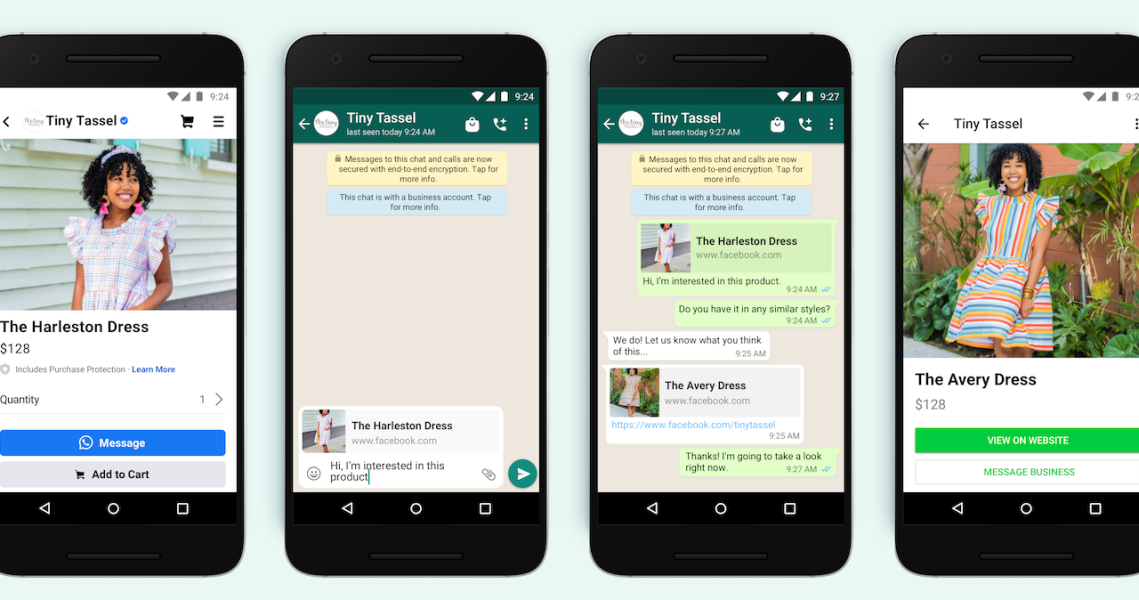On Tuesday, Facebook announced a number of shopping updates. They included the rollout of Facebook Shop, upcoming enhancements to existing functions and details on when Instagram Checkout will come out of beta.
But for fashion and beauty brands that have been monitoring these updates since Instagram launched its first shopping tool in 2016, the big pain point out of the gate still remains: the lack of access to customer data. Not that it matters much.
As it stands, brands give up much of their customer data privileges when they enlist in Instagram Checkout, which provides customers the most streamlined route to a purchase; everything happens within the app.
You only get “enough data to fill the order” when customers make a purchase through Checkout, and rights to that data stop there, a brand marketer told Glossy early this year. Another brand executive said that, since their company started offering shopping — linking to their own site versus using Checkout — they’ve seen no change in the data Instagram provides; it’s still just website clicks, profile visits, audience metrics, reach and impressions.
If it were up to brands, they’d get to control the customer’s shopping experience, including sending transactional emails like order and shipment confirmations, and later build on that relationship using the customer’s personal information. For now, the route to any communication post-purchase requires customers to sign up for the brand’s email in Checkout.
This is not an Instagram-specific roadblock. A common story of the popular platforms, marketplaces and retailers, Instagram’s vast user base makes it impervious to brand partners’ pressures to, for example, cough up data. Brands like Nike have recently made big moves to disintermediate, but brands that aren’t giants can’t afford to be anywhere but at the center of the shopping action, especially since March.
This week, in the Facebook announcement about what’s new and next, it listed “new insights to help businesses measure results” when using Shops as coming soon. I asked George Lee, director of product management at Facebook, to elaborate on what those insights will be, and he said they’ll center on the performance of the Shops — how brands can make changes to its look or organization to better drive sales. In other words, it’s not individual customer data.
Ad position: web_incontent_pos1
But the platform’s limitations aren’t enough to stop brands from using Instagram as a sales channel and taking advantage of every tool offered. Instagram’s too big a force in fashion and beauty to opt out. Especially for smaller brands, the perks of sales and awareness outweigh the void of the kind of numbers and stats a company can get from an owned e-commerce channel.
According to Facebook’s latest stats, over 90% of people follow a business on Instagram, and more than 130 million Instagram users tap a post to reveal a product’s tag every month, hinting at an interest to purchase. Plus, over 80% of Instagram users say the app helps them make purchasing decisions.
As Instagram rolls out new shopping features, it’s set to further cement itself as the new mall. Instagram Shop, which launched in July, has big potential: It provides a personalized shopping experience by serving up products from new-to-discover and familiar brands, as well as themed product curations. Later this year, a Shop tab will launch, saving shoppers the step of going to the Explore page to access Instagram Shop.
There are also opportunities around Instagram Live, which saw a 70% boost in usage from March to April, according to Facebook. When Instagram Checkout rolls out to all brands “in the coming weeks,” so too will Instagram Live Shopping. When the feature was used by trans beauty influencer Nikita Dragun for a live-streamed tutorial-launch in July, it drove 33,000 product page impressions, and 5,000 products were added to viewers’ carts.
And according to Layla Amjadi, product lead for Instagram Shopping, brands’ loyalty programs and points systems will be integrated into Checkout in the future.
Ad position: web_incontent_pos2
Brands are already all in. Fiona Morrison, founder of 7-year-old jewelry brand Wolf Circus, told me she’s heavily focused on customer behavior data, when it comes to shoppers on her brand’s e-commerce site, including what shoppers click on and add to cart, but don’t buy.
But when given access, she’s ready to sign up for Instagram Checkout. “I don’t need that data, I don’t need the 5%,” she said, referring to Instagram’s selling fee of 5% per shipment. “If the customer is having a good experience, and they want to click, buy, shop, I want to make it easy for them.”
Her company is small, but growing — it will have 15 employees by the end of September, and it did $2 million in sales last year, double the year before as is typical for the brand. She’s seen the power of Instagram, with most of the brand’s 82,000 followers finding it after a photo of its “boob necklace” went viral around the 2016 election. It drove her biggest sales week to date, at the time.
Wei Lin, founder and CEO of contemporary knitwear brand PH5, said 30% of the company’s e-commerce sales are driven directly through Instagram ads. And because more people are shopping on their phones, she said her “small, but profitable” brand will be jumping at the chance to sign on for Instagram Checkout.
The key to getting better data from Instagram, she said, is to advertise. “Instagram itself doesn’t give us a lot, but through Instagram Ads Manager, we’re able to have a very good read on our audience: engagement, conversion, performance, age, gender. But as we get better at [working with data], I’m sure we will want more.”




